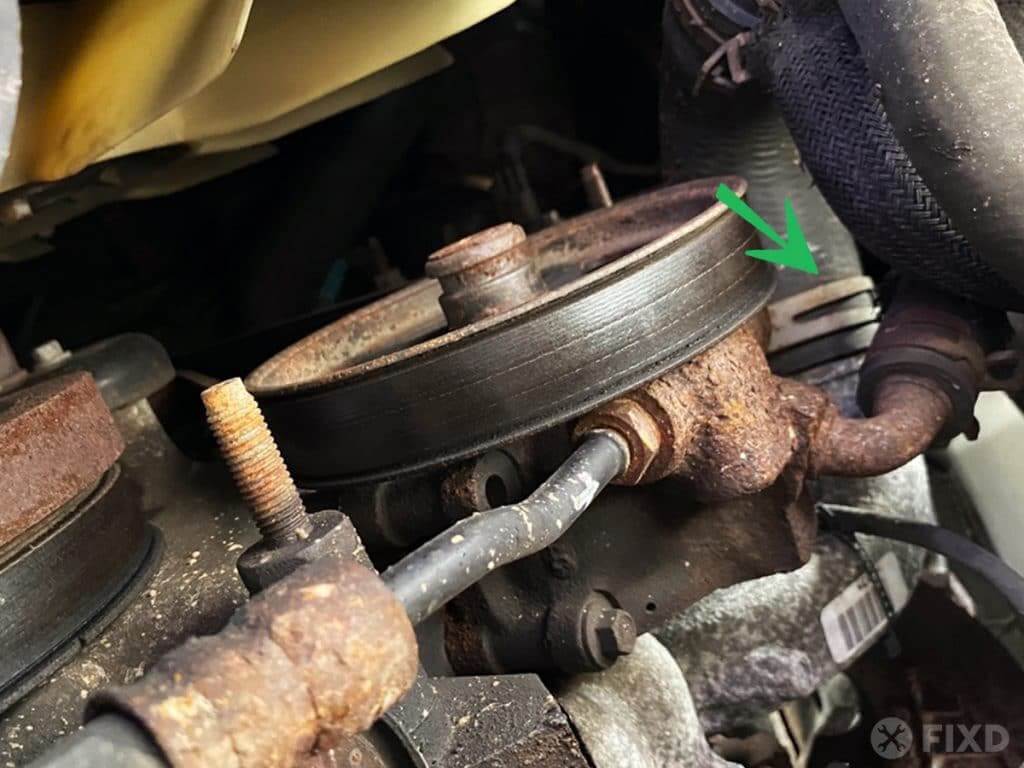How To Change A Power
Changing Power Steering Fluid Is a Beginner Job for Most DIYers. Here's Everything You Need to Know to Change Power Steering Fluid at Home.
- DIY Difficulty Level: Beginner
- Time Required: 1 to 2 hours
- Tools & Materials:
- Pliers
- Drain pan
- Turkey baster (preferably not the one you use for cooking)
- Replacement fluid
What Is Power Steering Fluid?
Power steering is typically a hydraulic system, similar to your brakes, that makes it easier for you to steer your car. This system contains a fluid that should be changed from time to time. This is also a good time to check for leaks or worn hoses and repair them if necessary as well.
More and more new cars use an electric power steering system instead. This uses an electric motor instead of hydraulics and does not require fluid changes.
Is It Safe to Drive with Old Power Steering Fluid?
Your power steering fluid doesn't need to be changed often. Over time, though, leaks can form in your steering system, allowing fluid to escape and that which remains to get dirty. This causes extra wear and strain on the steering system and can result in the failure of your pump or other components.
Changing your power steering fluid yourself is cheap and easy, providing extra insurance against other problems that can crop up. It also gives you an opportunity to check for leaks and replace any other components that need it. If you're not comfortable doing this job yourself, taking it to a shop won't break the bank, either.
When to Change Power Steering Fluid
Generally speaking, you should flush your power steering fluid every two years or 50,000 miles, whichever comes first. Be sure to check your manufacturer-recommended maintenance schedule or free FIXD app to find out what is recommended for your particular make and model.
What Are Common Symptoms Indicating You Need a Power Steering Flush?
- Fluid is brown or black
- Groaning noise from the power steering pump, particularly when turning the steering wheel
- Increased difficulty turning the steering wheel
Keep in Mind
Different vehicles use different types of power steering fluid. Some even use automatic transmission fluid for the power steering system. Make sure you use the correct fluid as specified for your particular vehicle.
Remember to always follow the manufacturer's recommended maintenance schedule and do this service as advised for your make and model.
How It's Done
Step 1: Jack up your car

Follow these instructions to jack up the front of your car and support it on jack stands.
Step 2: Drain the power steering reservoir

Find your power steering fluid reservoir. This is often attached to the power steering pump itself. Open the cap, and use a turkey baster to suck as much fluid out as you can, like a giant eyedropper.
Step 3: Disconnect the return line and drain the system

Find your power steering fluid return line. There are two lines under the car that attach to the power steering pump. The return line is the one with clamps that you can remove with a pair of pliers.
Place your drain pan under the return line. Remove the clamp, then pull the hose off. Fluid will pour out of both ends and will likely make a bit of a mess. The more fluid you drained out of the reservoir in Step 2, the less you will have to drain out here.
With the hose still disconnected, turn the steering wheel all the way to the left and right several times. This will pump even more old fluid out of the system. Keep doing this until fluid stops coming out.
Step 4: Flush the system with fresh fluid
With the return line hose still disconnected, fill the reservoir about halfway with fresh fluid.
Start and run the engine to force this fluid through your steering system and drain out the bottom, flushing any dirt or remnants of dirty fluid out of the system. Once again, turn the steering wheel all the way left and right several times to get all the power steering fluid out.
The reservoir will drain while you do this. Keep an eye on it, and make sure you pour enough fluid in the reservoir so that it doesn't go dry.
When the fluid coming out is the same color as the fluid you're pouring in, the system is clean. Turn off the engine.
Step 5: Reconnect the return line
Slip the return hose back onto its fitting. Using a pair of pliers, replace the clamp on the hose so it won't come loose.
Step 6: Top off the fluid
Fill the power steering reservoir all the way to the "full" mark. Put the cap on, then run the engine for about 10 seconds. Shut it off, remove the cap, and refill the fluid to the "full" mark.
Step 7: Check for leaks
Start the engine and let it run while looking underneath the car to see if fluid is leaking from anywhere. Pay close attention to where you disconnected the hose to drain and flush the system. But don't mistake fluid that spilled while the hose was off for a new leak, either.
Yet again, turn the steering wheel all the way right and left to pump fresh fluid all the way through the system. Keep checking and topping off the fluid level in the reservoir until it remains full.
Step 8: Lower the car and take a test drive
If you haven't already, remove the drain pan from under the car. Remove the jack stands and place the car back on the ground. Turn the steering wheel all the way left and right, this time to make sure it functions with little effort despite the tires being on the ground. If everything feels right, take a test drive to see how it feels out on the road. If everything works well, congratulations, you're done.
If the steering doesn't feel quite right, open the hood and check the power steering fluid level. It's possible that you still had some air bubbles in the system, which may have burped themselves out while you drove. If the fluid is full and you still have problems, have your car looked at by a professional for further diagnosis.
Claim Your Custom Maintenance Schedule
Get the FIXD Sensor and free app today for a custom maintenance schedule based on your make, model, and mileage. Never miss important maintenance again with automated maintenance alerts! Learn more at fixd.com.

Recovering autocross and track day enthusiast. Once turned a VW Jetta into a pickup truck. Lives in a van down by the river. Dream car: 2001 Subaru WRC rally car.
How To Change A Power
Source: https://www.fixdapp.com/blog/how-to-change-power-steering-fluid/
Posted by: costadereddeedly.blogspot.com

0 Response to "How To Change A Power"
Post a Comment